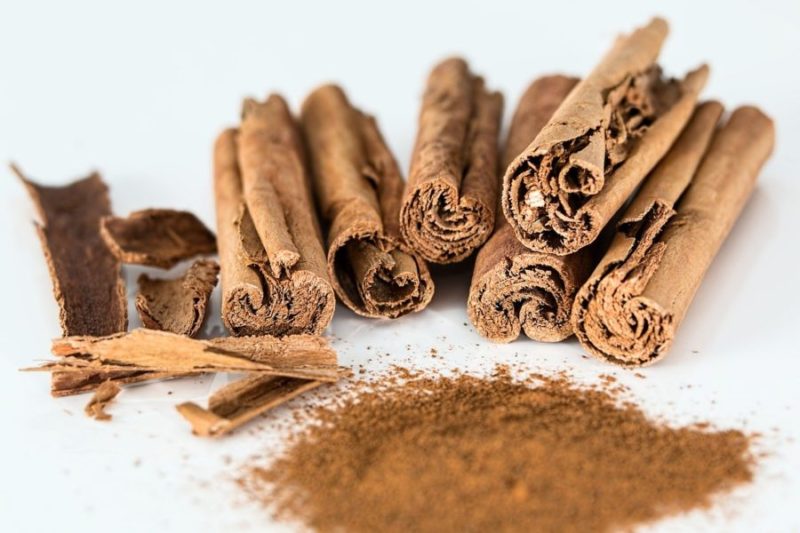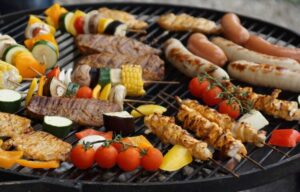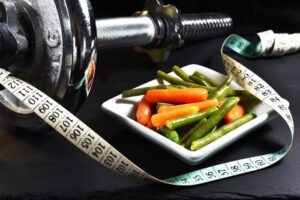מחקרים רבים מצביעים על יתרונותיו של הקינמון. השימוש בקינמון נחקר באופן מקיף ומגוון ממצאים מדעיים אמפיריים מוכיחים את התועלת שבשימוש בקינמון על מגוון האופנים שלו. בין אם מדובר בחליטת תה קינמון, שתיית כמוסות עם אבקת קינמון או שימוש בשמן קינמון. ערכיו התזונתיים של קינמון מבטאים מעט מסגולותיו יוצאות הדופן. היתרונות של קינמון והתועלות הרפואיות שהוא מסב לגוף האדם ובעלי החיים הן מגוונות ומרובות.
חשוב לא להפריז בצריכת קינמון, למרות תועלותיו בשל סיכון להכבדה על הכבד. לכן, מומחים רבים ממליצים על השימוש בקינמון ציילוני המכיל ריכוז נמוך יותר של קומרין שעלול להיות רעיל לכבד.
יתרונות הקינמון
היתרונות הבריאותיים של הקינמון הינם מגוונים. תועלותיו של הצמח על שימושיו באופנים השונים משתרעים על מגוון תחומים. מחקרים מגוונים נערכו כדי להוכיח את התועלת הטמונה בו. בנוסף ידועות השפעותיו על פי הרפואה הסינית, הרפואה העממית. בתבלין מחמם זה נעשה שימוש רב כצמח מרפא בריפוי הטבעי, כתרופת סבתא לריפוי טבעי. אז מה היתרונות של קינמון ?
- מסייע להרזיה והורדה במשקל מכיוון שהוא מגביר את תחושת השובע
- קינמון מסייע להורדת רמות הסוכר בדם ומועיל כנגד סוכרתיות
- מפחית סיכון לחלות בסרטן
- מסייע להפחתת התפשטות של הסרטן
- חליטת קינמון לטיפול בריח פה
- בעל יכולות נוגדות דלקתיות
- שמירה על בריאות הפה והחניכיים
- טיפול בתסמינים של וירוסים וחיידקים
- מחזק את מערכת החיסון
- בעל יכולות אנטי בקטריאליות ואנטי-ספטיות
- מסייע לטיפול להפחתת כאבי ראש
- מעצים את היכולות הקוגניטיביות והיכולות השכליות
- משפר את הזיכרון
- מפחית את הסיכון לאלצהיימר
- מסייע לאיזון הורמונלי ולכן מפחית כאבי מחזור
- מפחית כאבים ראומטים בגוף – כלומר מצמצם את עוצמת כאבי המפרקים
- עוזר בשיפור הפוריות כיוון שמאזן ייצור הורמונים בגוף האישה
- מסייע כנגד כולסטרול
מחקרים מדעיים בנושא יתרונות הקינמון
מגוון מחקרים על קינמון מצביעים על תועלותיו ויתרונותיו על בסיס ממצאים מדעיים אמפיריים בדבר שימוש בו במגוון אופנים. להרחבה והעשרה אודות מחקרים שונים המתארים את סגולותיו הבריאותיות של קינמון, מחקרים על יתרונותיו והתועלת שבשימוש בו:
- Quale JM, Landman D, Zaman MM, Burney S, Sathe SS. In vitro activity of Cinnamomum zeylanicum against azole resistant and sensitive Candida species and a pilot study of cinnamon for oral candidiasis. Am J Chin Med. 1996;24:103–9.
- Abraham K, Wöhrlin F, Lindtner O, Heinemeyer G, Lampen A. Toxicology and risk assessment of coumarin: Focus on human data. Mol Nutr Food Res. 2010;54:228–39.
- Allen RW, Schwartzman E, Baker WL, Coleman CI, Phung OJ. Cinnamon use in type 2 diabetes: An updated systematic review and meta-analysis. Ann Fam Med. 2013;11:452–9. [PMC free article]
- Bandara T, Uluwaduge I, Jansz ER. Bioactivity of cinnamon with special emphasis on diabetes mellitus: a review. Int J Food Sci Nutr. 2012;63:380–386. doi: 10.3109/09637486.2011.627849.
- Baratta MT, Dorman HJD, Deans SG, Figueiredo AC, Barroso JG, Ruberto G. Antimicrobial and antioxidant properties of some commercial essential oils. Flavour Fragr J. 1998;13:235–244. doi: 10.1002/(SICI)1099-1026(1998070)13:4<235::AID-FFJ733>3.0.CO;2-T.
- Bender BG, Bender SE. Patient-identified barriers to asthma treatment adherence: Responses to interviews, focus groups, and questionnaires. Immunol Allergy Clin North Am. 2005;25:107–30.
- Bhatia M, Sharma A. Inactivation of candidia albicans in culture media by eight spices native to Indian subcontinent. Intl J Pharm Sci Rev Res. 2012;16:125–129.
- Bundesinstitut für Risikobewertung. High daily intakes of cinnamon: health risk cannot be ruled out. Germany: Bundesinstitut für Risikobewertung; 2006. (Book high daily intakes of cinnamon: health risk cannot be ruled out).
- Cao H, Urban JF Jr, Anderson RA. Cinnamon polyphenol extract affects immune responses by regulating anti- and proinflammatory and glucose transporter gene expression in mouse macrophages. J Nutr. 2008;138:833–840.
- Chulasiri MU, Picha P, Rienkijkan M, Preechanukool K. The cytotoxic effect of petroleum ether and chloroform extracts from ceylon cinnamon (cinnamomum zeylanicum nees) barks on tumor cells in vitro. Int J Crude Drug Res. 1984;22:177–180.
- Dubey RC, Rana A, Shukla RK. Antibacterial activity of essential oils of some medicinal plants against certain human pathogens. Indian Drugs. 2005;42:443–446.
- Elumalai S, Kesavan R, Ramganesh S, Prakasam V, Murugasen R. Comparative study on anti-microbial activities of bark oil extract from cinnamomum cassia and cinnamomum zeylanicum. Biosci Biotechnol Res Asia. 2010;7:251–258.
- Ferhout H, Bohatier J, Guillot J, Chalchat JC. Antifungal activity of selected essential oils, cinnamaldehyde and carvacrol against malassezia furfur and candida albicans. J Essent Oil Res. 1999;11:119–129. doi: 10.1080/10412905.1999.9701086.
- Garg A, Aggarwal BB. Nuclear transcription factor-kappaB as a target for cancer drug development. Leukemia. 2002;16:1053–68.
- Gonçalves JLS, Lopes RC, Oliveira DB, Costa SS, Miranda MMFS, Romanos MTV, Santos NSO, Wigg MD. In vitro anti-rotavirus activity of some medicinal plants used in Brazil against diarrhea. J Ethnopharmacol. 2005;99:403–407. doi: 10.1016/j.jep.2005.01.032.
- Gruenwald J, Freder J, Armbruester N. Cinnamon and health. Crit Rev Food Sci Nutr. 2010;50:822–834. doi: 10.1080/10408390902773052.
- Han DC, Lee MY, Shin KD, Jeon SB, Kim JM, Son KH, et al. 2’-benzoyloxycinnamaldehyde induces apoptosis in human carcinoma via reactive oxygen species. J Biol Chem. 2004;279:6911–20.
- Harada M, Yano S. Pharmacological studies on Chinese cinammon. II. Effects of cinnamaldehyde on the cardiovascular and digestive systems. Chem Pharm Bull (Tokyo) 1975;23:941–1.
- Hayashi K, Imanishi N, Kashiwayama Y, Kawano A, Terasawa K, Shimada Y, et al. Inhibitory effect of cinnamaldehyde, derived from Cinnamomi cortex, on the growth of influenza A/PR/8 virus in vitro and in vivo. Antiviral Res. 2007;74:1–8.
- Jain S, Sangma T, Shukla SK, Mediratta PK. Effect of Cinnamomum zeylanicum extract on scopolamine-induced cognitive impairment and oxidative stress in rats. Nutr Neurosci. 2014
- Javed I, Faisal I, Rahman Z, Khan MZ, Muhammad F, Aslam B, et al. Lipid lowering effect of Cinnamomum zeylanicum in hyperlipidaemic albino rabbits. Pak J Pharm Sci. 2012;25:141–7.
- Javed I, Faisal I, Zia Ur R, Khan MZ, Muhammad F, Aslam B, Ahmad M, Shahzadi A. Lipid lowering effect of cinnamomum zeylanicum in hyperlipidaemic albino rabbits. Pak J Pharm Sci. 2012;25:141–147.
- Jayaprakasha GK, Negi PS, Jena BS, Rao LJM. Antioxidant and antimutagenic activities of cinnamomum zeylanicum fruit extracts. J Food Compost Anal. 2007;20:330–336. doi: 10.1016/j.jfca.2006.07.006.
- Jitomir J, Willoughby DS. Cassia cinnamon for the attenuation of glucose intolerance and insulin resistance resulting from sleep loss. J Med Food. 2009;12:467–72.
- Karin M, Cao Y, Greten FR, Li ZW. NF-kappaB in cancer: From innocent bystander to major culprit. Nat Rev Cancer. 2002;2:301–10.
- Khan R, Islam B, Akram M, Shakil S, Ahmad A, Ali SM, Siddiqui M, Khan AU. Antimicrobial activity of five herbal extracts against multi drug resistant (MDR) strains of bacteria and fungus of clinical origin. Molecules. 2009;14:586–597. doi: 10.3390/molecules14020586.
- Kwon HK, Jeon WK, Hwang JS, Lee CG, So JS, Park JA, et al. Cinnamon extract suppresses tumor progression by modulating angiogenesis and the effector function of CD8+ T cells. Cancer Lett. 2009;278:174–82.
- Lima EO, Gompertz OF, Giesbrecht AM, Paulo MQ. In-vitro antifungal activity of essential oils obtained from officinal plants against dermatophytes. Mycoses. 1993;36:333–336.
- Maidment C, Dyson A, Haysom I. A study into the antimicrobial effects of cloves (syzgium aromaticum) and cinnamon (cinnamomum zeylanicum) using disc-diffusion assay. Nutr Food Sci. 2006;36:225–230. doi: 10.1108/00346650610676794.
- Mancini-Filho J, Van-Koiij A, Mancini DA, Cozzolino FF, Torres RP. Antioxidant activity of cinnamon (cinnamomum zeylanicum, breyne) extracts. Boll Chimico Farm. 1998;137:443–447.
- Markey O, McClean CM, Medlow P, Davison GW, Trinick TR, Duly E, et al. Effect of cinnamon on gastric emptying, arterial stiffness, postprandial lipemia, glycemia, and appetite responses to high-fat breakfast. Cardiovasc Diabetol. 2011;10:78. [PMC free article]
- Markey O, McClean CM, Medlow P, Davison GW, Trinick TR, Duly E, Shafat A. Effect of cinnamon on gastric emptying, arterial stiffness, postprandial lipemia, glycemia, and appetite responses to high-fat breakfast. Cardiovasc Diabetol. 2011;10:78. doi: 10.1186/1475-2840-10-78.
- Mastura M, Nor Azah MA, Khozirah S, Mawardi R, Manaf AA. Anticandidal and antidermatophytic activity of cinnamomum species essential oils. Cytobios. 1999;98:17–23.
- Matan N, Rimkeeree H, Mawson AJ, Chompreeda P, Haruthaithanasan V, Parker M. Antimicrobial activity of cinnamon and clove oils under modified atmosphere conditions. Int J Food Microbiol. 2006;107:180–5.
- Meades G Jr, Henken RL, Waldrop GL, Rahman MM, Gilman SD, Kamatou GP, Viljoen AM, Gibbons S. Constituents of cinnamon inhibit bacterial acetyl CoA carboxylase. Planta Med. 2010;76:1570–1575. doi: 10.1055/s-0030-1249778.
- Menzin J, Korn JR, Cohen J, Lobo F, Zhang B, Friedman M, et al. Relationship between glycemic control and diabetes-related hospital costs in patients with type 1 or type 2 diabetes mellitus. J Manag Care Pharm. 2010;16:264–75.
- Moher D, Liberati A, Tetzlaff J, Altman DG. Preferred reporting items for systematic reviews and meta-analyses: the PRISMA statement. BMJ. 2009;339:b2535. doi: 10.1136/bmj.b2535.
- Muthuswamy S, Rupasinghe HP, Stratton GW. Antimicrobial effect of cinnamon bark extract on Escherichia coli O157: H7, listeria innocua and fresh-cut apple slices. J Food Saf. 2008;28:534–49. [Google Scholar]
- Negi PS, Jayaprakasha GK, Rao LJ. Antibacterial activity of cinnamomum zeylanicum fruit extracts. Sci Aliments. 2007;27:245–250. doi: 10.3166/sda.27.245-250.
- Nuryastuti T, van der Mei HC, Busscher HJ, Iravati S, Aman AT, Krom BP. Effect of cinnamon oil on icaA expression and biofilm formation by Staphylococcus epidermidis. Appl Environ Microbiol. 2009;75:6850–5. [PMC free article]
- Nyadjeu P, Dongmo A, Nguelefack TB, Kamanyi A. Antihypertensive and vasorelaxant effects of cinnamomum zeylanicum stem bark aqueous extract in rats. Integr Med: J Complement; 2011. p. 8.
- Quale JM, Landman D, Zaman MM, Burney S, Sathe SS. In vitro activity of cinnamomum zeylanicum against azole resistant and sensitive candida species and a pilot study of cinnamon for oral candidiasis. Am J Chin Med. 1996;24:103–109. doi: 10.1142/S0192415X96000153.
- Rafehi H, Ververis K, Karagiannis TC. Controversies surrounding the clinical potential of cinnamon for the management of diabetes. Diabetes Obes Metab. 2012;14:493–9.
- Rana IS, Singh A, Gwal R. In vitro study of antibacterial activity of aromatic and medicinal plants essential oils with special reference to cinnamon oil. Int J Pharm Pharm Sci. 2011;3:376–380.
- Reichard P, Nilsson BY, Rosenqvist U. The effect of long-term intensified insulin treatment on the development of microvascular complications of diabetes mellitus. N Engl J Med. 1993;329:304–9.
- Rosti L, Gastaldi G, Frigiola A. Cinnamon and bacterial enteric infections. Ind J Ped. 2008;75:529–530. doi: 10.1007/s12098-008-0087-5.
- Samarasekera R, Kalhari KS, Weerasinghe IS. Mosquitocidal activity of leaf and bark essential oils of ceylon cinnamomum zeylanicum. J Essent Oil Res. 2005;17:301–303. doi: 10.1080/10412905.2005.9698909.
- Shahverdi AR, Monsef-Esfahani HR, Tavasoli F, Zaheri A, Mirjani R. Trans-cinnamaldehyde from cinnamomum zeylanicum bark essential oil reduces the clindamycin resistance of clostridium difficile in vitro. J Food Sci. 2007;72:S055–058. doi: 10.1111/j.1750-3841.2006.00204.x.
- Simic A, Sokovic MD, Ristic M, Grujic-Jovanovic S, Vukojevic J, Marin PD. The chemical composition of some lauraceae essential oils and their antifungal activities. Phytother Res. 2004;18:713–717. doi: 10.1002/ptr.1516.
- Singh G, Maurya S, DeLampasona MP, Catalan CA. A comparison of chemical, antioxidant and antimicrobial studies of cinnamon leaf and bark volatile oils, oleoresins and their constituents. Food Chem Toxicol. 2007;45:1650–1661. doi: 10.1016/j.fct.2007.02.031.
- Sivakumar A, Jayaraman G. Anti-tuberculosis activity of commonly used medicinal plants of south India. J Med Plants Res. 2011;5:6881–6884.
- Tekwu EM, Askun T, Kuete V, Nkengfack AE, Nyasse B, Etoa FX, Beng VP. Antibacterial activity of selected cameroonian dietary spices ethno-medically used against strains of mycobacterium tuberculosis. J Ethnopharmacol. 2012;142:374–382. doi: 10.1016/j.jep.2012.05.003.








